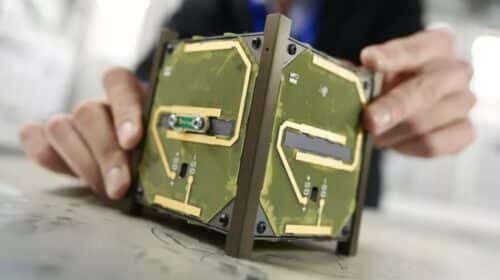This tiny satellite will take CERN’s radiation research into space!

The European Space Agency has set the launch of the cubesat-sized CELESTA (CERN Latchup Experiment STudent sAtellite) for Wednesday, July 13, 2022. The satellite will travel to the core of the inner Van Allen radiation belt, a region of magnetically confined particles revolving around our globe, perched atop four stacked stages on the launcher.
According to the project website, CELESTA aims to study the effects of radiation on electronics in this area of high-energy particles in a practical manner. The Large Hadron Collider (LHC) was reopened in April after a three-year pause for modifications. Now, this project will help CERN (the European Council for Nuclear Research) extend its current radiation and fundamental physics activities into space.
Since the satellite will launch a radiation detector that has previously been tested in the harsh environment of the particle accelerator, there is a close connection between the LHC and CELESTA. In a press statement announcing the satellite’s testing in November 2018, CERN authorities mentioned a system known as RadMon that tracks radiation levels in the LHC. The news release said, “By using RadMon sensors to measure radiation levels in low-Earth orbit, CELESTA will test if RadMon could be used in space missions that are sensitive to radiation, ranging from telecom satellites to navigation and Earth-observation systems.”
In place of a larger satellite atop the rocket, the Vega-C successor has a new “small spacecraft mission service” that, according to the ESA, can fit approximately a dozen tiny satellites at once inside a fairing. According to the CIA, the rocket might someday be used in conjunction with the Space Rider reusable spacecraft, which could launch payloads into orbit and land them on a runway using a robotic space shuttle-like vehicle.
The Laser Relativity Satellite 2 experiment from the Italian Space Agency (ASI) will be the main payload of this first Vega-C launch (LARES-2). According to ASI, the satellite would try to validate some features of general relativity in spaceflight. CELESTA and five other cubesats will launch into orbit alongside LARES-2. The smaller satellites were all manufactured by European research institutions and universities.








